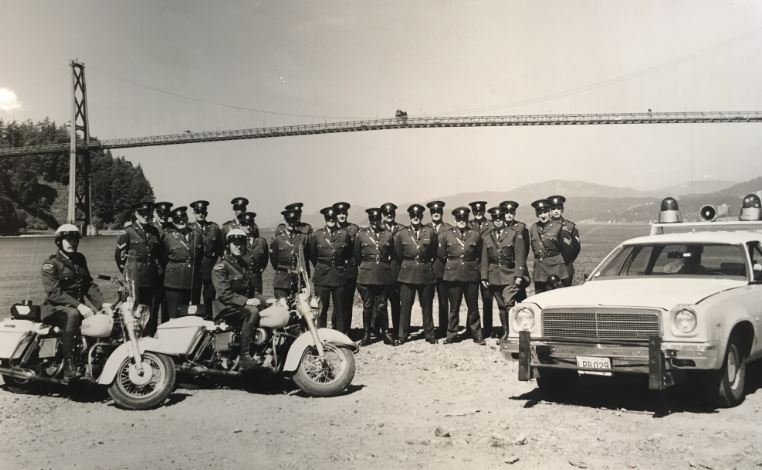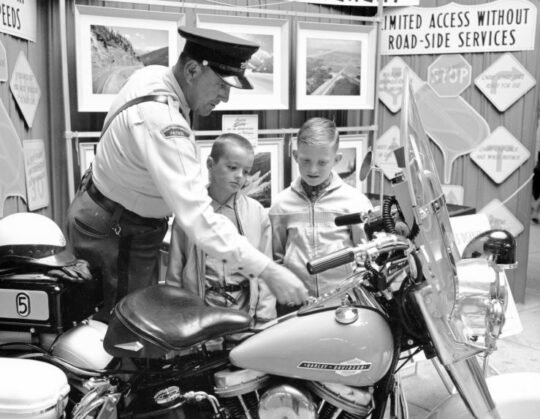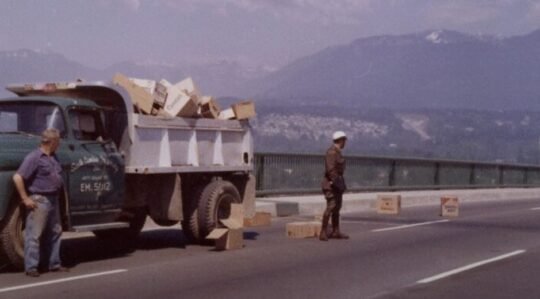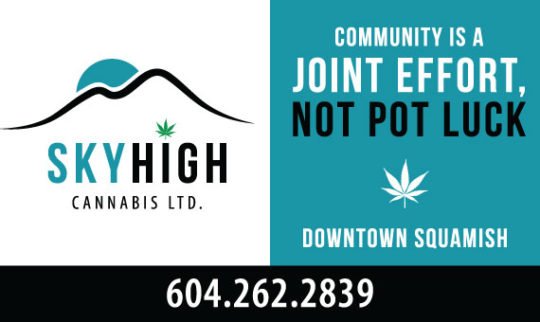
During the 1950s, British Columbia was undergoing an incredible post war boom. New highways infrastructure projects (bridges and freeways) were being built at a rapid pace, automobiles were everywhere, and cell phones and the internet were light years away.
Motorists often needed help at the roadside and the Department of Highways Traffic Patrol was there to help.
Formed in 1958, the Department of Highways Traffic Patrol was responsible for traffic control on five major lower mainland bridges – First Narrows (Lions Gate), Second Narrows (Iron-workers Memorial), Oak Street Bridge, George Massey Tunnel, Port Mann Bridge and all their approaches.

The patrol consisted of both corporals and patrolmen (approx. 30-40), who were sworn in as reserve constables with the Vancouver City Police, West Vancouver Police and the BC RCMP. None of the patrol ever had or carried guns while on duty.
Day to Day Activities of the Patrol
The biggest part of highway patrol work was to keep traffic moving. If vehicles broke down while on a bridge or in a tunnel, patrol officers got you moving again, either by radioing for a tow truck, fixing flat tires or even helping get you to a service station for gas or repairs.
Patrol officers were trained in first aid and their peace officer and special provincial constable status meant they could act as first responders in traffic accidents.

The highway patrol offices at the Lions Gate Bridge and the Port Mann Bridge were equipped with extrication kits (also known as the jaws of life) and each patrol member was trained to use them.
Then of course there was the enforcement, which included radar enforcement and moving violations.
Sometimes patrol members would conduct a safety check on a vehicle, run the driver information through the police database and discover the person had a warrant out for their arrest, so we would arrest them and take them down to the police station and lodge them into a cell there for the police.
Officers were sometimes deployed to local emergency scenes (such as the Hope Slide and the Deeks Creek Washout) as well as Horseshoe Bay and Tsawwassen Ferry Terminals to help with traffic control during the busy summer months.

BC Highway Traffic Patrol by the Numbers
Each year, the work done by the patrol was captured and reported. In 1973, for example, the patrol:
recorded 445,919 miles
dealt with 13,816 stalled vehicles
investigated 1,087 accidents
prosecuted 2,880 drivers
issued 1,127 warnings
arrested 31 impaired drivers
Additionally, they dealt with and investigated 31 suicides and attempts, numerous assaults, drug and firearms offences, stolen vehicles, escaped prisoners and many other offences.

What Happened to the BC Highway Patrol?
The special constable status of patrol members was challenged in 1982-83 and as a result, a provincial judge removed their status and ability to enforce infractions. Municipal and RCMP Traffic Services took over patrol enforcement duties and from 1983-1988 the highway patrol focused only on removing stalled vehicles, attending collisions and doing brake checks at Horseshoe Bay terminal approach.
Following the privatization of highways in 1988, the patrol was merged into an early version of today’s Commercial Vehicle Safety Enforcement Branch, joining commercial vehicle Weighmasters and Motor Vehicle Inspectors to form the Motor Vehicle Branch.
This article was first published on the website of the Ministry of Transportation and Infrastructure as part of their throwback Thursday series.




